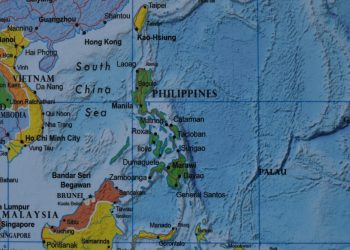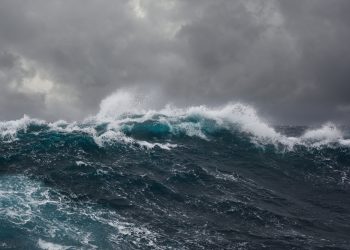A terrible storm in the Atlantic might cause terrible carnage
 One hundred years ago it would not be even remarkable to hear that even well-found ships had been overwhelmed by seasonal storms. A terrible storm in the Atlantic might cause terrible carnage to the fishing fleets of Northern Europe which had been caught out by the weather, far from shelter.
One hundred years ago it would not be even remarkable to hear that even well-found ships had been overwhelmed by seasonal storms. A terrible storm in the Atlantic might cause terrible carnage to the fishing fleets of Northern Europe which had been caught out by the weather, far from shelter.
Today, we have a far better understanding of the progress of weather with, by and large, excellent and relatively accurate forecasts of anything likely to cause real concern to shipping. Although we are sometime lulled into a false sense of security by the size and power of modern ships and our apparent comprehension of what meteorology might have in store for us on the voyage. Every Winter will give us unpleasant reminders of the power of nature and its unpredictability, confounding all our technology. We have had some already this northern Winter.
Everyone needs a reminder from time to time of the power of the sea. Mariners need to take the proper precautions, like battening down a ship and making it secure, and ensuring that there are no loose objects that will be thrown around and hurt people or do damage. It seems unnecessary to remind people to secure their furniture, although in modern ships it is unusual to see lashing points under chairs or tables. Perhaps you need to see an armchair thrown across the room to bring the problem home to the designer. Seamanship, it is worth recalling, is as much about anticipation as reaction and fastidiously checking lashings and securing a ship ready for heavy weather is effort well spent.
But people ashore also need to be reminded about the colossal ability of nature to make a terrible mess, even if they have not had experience of heavy weather at sea. They too need to take professional warnings seriously and ensure that nobody starts pressurising the Master to leave shelter or asking questions about when he will be under way again. Mariners are the best risk managers in such circumstances and operators need to keep this in mind. By and large, there is a reprehensible tendency today to question the decision making of the Master and operators and charterers need sometimes to remember their respective responsibilities.
Naval architects also need to remember that seas are not always smooth and winds balmy, and that such devices as raised forecastles and poops were there for a purpose, as were long-forgotten features as rise of floor and camber. Heavy green water still does sometimes board quite large ships in extreme weather, and thought needs to be given to the damage it might do once it is on deck.
There are some ships which one might think have been almost designed to be vulnerable to pooping, with little freeboard aft, and no absolute guarantee that somebody will have closed and dogged down the hatch into the steering gear or the door into the accommodation. Naval architects rarely seem to get to sea when they are in training, but there is surely a case for some exposure to the elements before they have the responsibility to design things. There are certain places aboard ship where weight can be saved. The weather deck, where all the fittings need strength and solidity, is not a place for weight saving. Storms happen and extreme weather may be nothing like as rare as we might think. Some anticipation all around can be very helpful.
Source: BIMCO, Watchkeeper
Also, view relative videos: How to avoid hazardous weather at sea































































